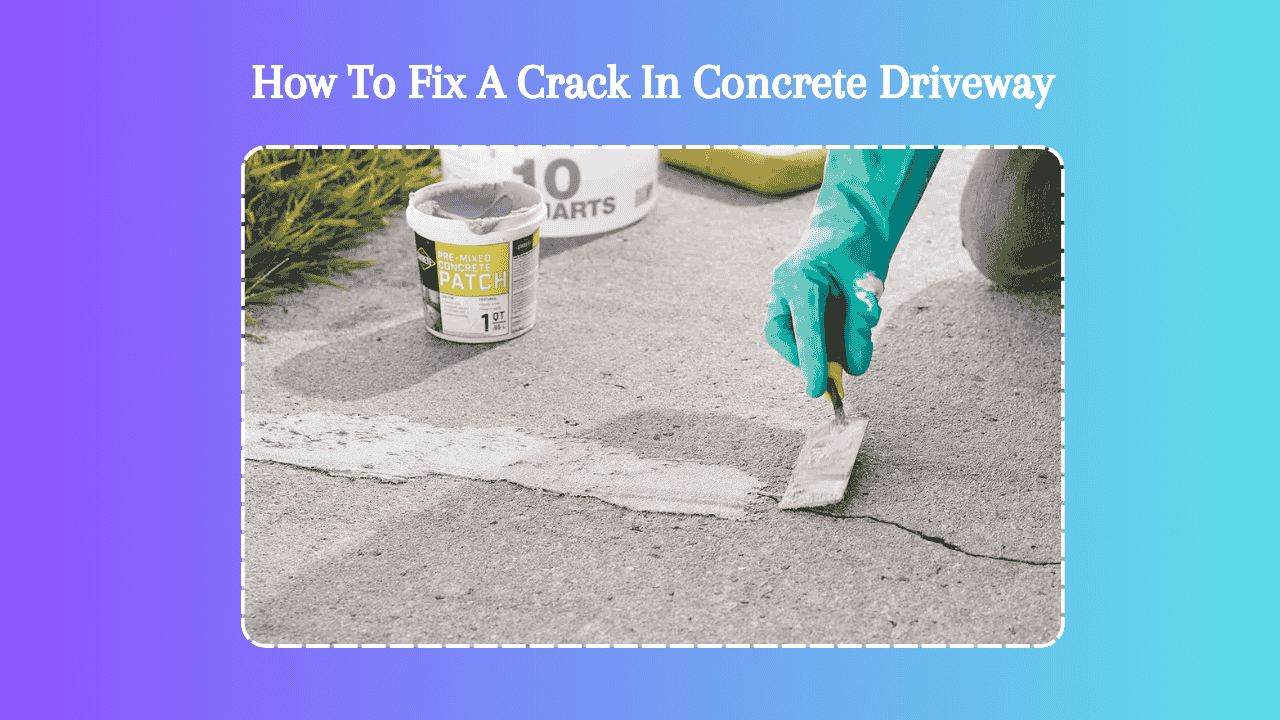Drawing on years of experience in the concrete repair industry, Affordable Concrete San Antonio is here to guide you through the most effective methods to repair concrete cracks and maintain the durability of your surfaces. By the end, you’ll feel confident about tackling your concrete issues. Let’s dive in!
Methods for Repairing Concrete Cracks
Concrete cracks can be repaired in several ways, depending on the location and extent of the damage. Below, we break down the most popular materials and methods:
- Flexible Concrete Caulk
Flexible caulk is formulated specifically for concrete, adhering to its surface and accommodating natural expansion and contraction caused by temperature changes and moisture.
There are two main types:
- Non-sag caulk for vertical surfaces.
- Self-leveling caulk for horizontal surfaces.
If you plan to repair cracks yourself, make sure you choose the correct type, as the application process varies for each.
- Polyurea Crack Filler
Polyurea is a semi-rigid, two-part liquid that quickly sets and strengthens damaged concrete. It is ideal for filling wide cracks or repairing spalled joints. However, due to its extensive preparation requirements, professional installation is often recommended.
- Epoxy Crack Filler
Epoxy is another two-part material that reinforces and seals concrete cracks. It can be sanded for a smooth finish, making it ideal for interior surfaces like garage floors. While DIY kits are available, the process is more complex than other methods, so hiring professionals like Affordable Concrete San Antonio ensures a better outcome.
- Concrete Patches
Concrete patches are an affordable, temporary solution sold in most hardware stores. However, these patches tend to break apart as the concrete moves due to weather or weight changes.
- Mortar or Grout
Mortar and grout can be used to fill cracks, but they lack flexibility. Over time, they crumble as the concrete naturally shifts and contracts. These are best avoided for areas exposed to outdoor elements.
Choosing the Best Repair Method for Your Concrete
The most effective repair method depends on where the crack is located and how the concrete is used.
Exterior Surfaces
For driveways, patios, and sidewalks, flexible concrete caulk works best as it keeps moisture out and moves with the concrete. Avoid using rigid materials like grout or mortar on outdoor surfaces.
Interior Floors
For garage floors or indoor slabs, epoxy or polyurea crack fillers are excellent options. These materials provide a smooth, durable finish that can later be covered with coatings or other finishes.
Pro Tip: Always ensure your crack filler is compatible with any coatings or finishes you plan to apply.
Step-by-Step Guide to Repair Concrete Cracks
Repairing Driveway Cracks
- Clean the crack thoroughly, removing dirt and debris.
- Fill deep cracks with sand or backer rod to reduce caulk usage.
- Apply flexible concrete caulk along the crack.
- Smooth the surface with a damp tool.
- Sprinkle sand over the caulk for texture and blending.
Fixing Garage Floor Cracks
- Grind the edges of the crack for uniformity.
- Remove dust and loose debris.
- Apply epoxy or polyurea crack filler, ensuring it overflows slightly.
- Sand or scrape excess material for a smooth finish.
Sidewalk Repairs
- Level uneven slabs with professional concrete lifting services.
- Once even, follow the driveway crack repair steps to seal the cracks.
Narrow vs. Wide Cracks
Narrow Cracks (< ¼ inch wide):
Smaller cracks can often be filled directly with flexible caulk. These are typically less urgent unless they worsen over time.
Wide Cracks (> ¼ inch wide):
Wide cracks require additional preparation, such as filling the void with foam backer rods or sand before applying the repair material. This ensures proper bonding and reduces material usage.
Pro Tip: You can repurpose foam pool noodles as backer rods for large cracks!
DIY vs. Professional Repair Services
DIY Repairs
- Pros: Cost-effective if you already own tools.
- Cons: Requires time, effort, and knowledge to achieve professional results.
Professional Repairs
Hiring experts like Affordable Concrete San Antonio guarantees a high-quality finish that blends seamlessly with your existing concrete. Professionals handle every step, from preparation to cleanup, saving you time and ensuring lasting results.
How Long Does a Concrete Crack Repair Last?
The longevity of a repair depends on the material used and environmental factors. Flexible caulk may last several years outdoors but needs regular inspection to ensure it maintains a watertight seal. For indoor repairs, epoxy and polyurea fillers tend to last longer with minimal maintenance.
Common Questions About Concrete Crack Repair
Can a Concrete Sealer Fix Cracks?
No, concrete sealers protect the surface but do not fill cracks. For effective repair, use crack fillers designed for this purpose.
What Is the Best Material for Exterior Cracks?
Flexible polymer caulks are ideal for exterior repairs because they expand and contract with the concrete.
When Should I Call a Professional?
If cracks are large, deep, or worsening rapidly, it’s time to contact Affordable Concrete San Antonio for an expert opinion.
Why Choose Affordable Concrete San Antonio?
With years of experience, Affordable Concrete San Antonio provides expert concrete crack repair services tailored to your needs. From driveways to sidewalks and garage floors, we handle it all with precision and care.


